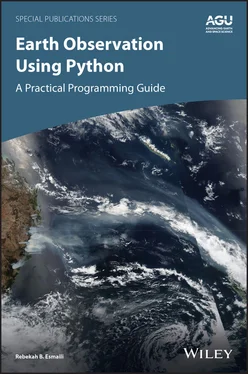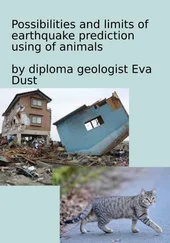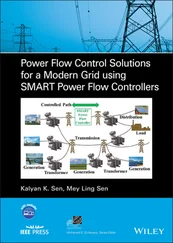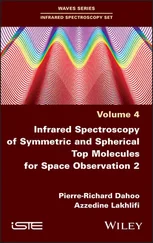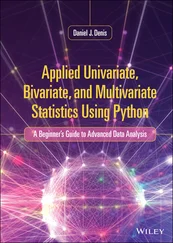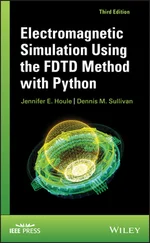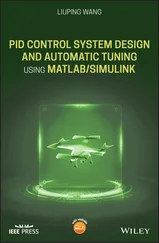I have chosen to highlight Python primarily because it is a general‐purpose language, rather than being discipline or task‐specific. Python programmers can script, process, analyze, and visualize data. Python’s popularity does not diminish the usefulness and value of other languages and techniques. As with all interpreted programming languages, Python may run more slowly compared to compiled languages like Fortran and C++, the traditional tools of the trade. For instance, some steps in data analysis could be done more succinctly and with greater computational efficiency in other languages. Also, underlying packages in Python often rely on compiled languages, so an advanced Python programmer can develop very computationally efficient programs with popular packages that are built with speed‐optimized algorithms. While not explicitly covered in this book, emerging packages such as Dask can be helpful to process data in parallel, so more advanced scientific programmers can learn to optimize the speed performance of their code. Python interfaces with a variety of languages, so advanced scientific programmers can compile computationally expensive processing components and run them using Python. Then, simpler parts of the code can be written in Python, which is easier to use and debug.
This book encourages readers to share their final code online with the broader community, a practice more common among software developers than scientists. However, it is also good practice to write code and software in a thoughtful and carefully documented manner so that it is usable for others. For instance, well‐written code is general purpose, lacks redundancy, and is intuitively organized so that it may be revised or updated if necessary. Many scientific programmers are self‐learners with a background in procedural programming, and thus their Python code will tend to resemble the flow of a Fortran or IDL program. This text uses Jupyter Notebook, which is designed to promote good programming habits in establishing a “digestible code” mindset; this approach organizes code into short chunks. This book focuses on clear documentation in science algorithms and code. This is handled through version control, using virtual environments, how to structure a usable README file, and what to include in inline commenting.
For most environmental science endeavors, data and code sharing are part of the research‐to‐operations feedback loop. “Operations” refers to continuous data collection for scientific research and hazard monitoring. By sharing these tools with other researchers, datasets are more fully and effectively utilized. Satellite data providers can upgrade existing datasets if there is a demand. Globally, satellite data are provided through data portals by NASA, NOAA, EUMETSAT, ESA, JAXA, and other international agencies. However, the value of these datasets is often only visible through scientific journal articles, which only represent a small subset of potential users. For instance, if the applications of satellite observations used for routine disaster mitigation and planning in a disadvantaged nation are not published in a scientific journal, improvements for disaster‐mitigation specific needs may never be met.
Further, there may be unexpected or novel uses of datasets that can drive scientific inquiry, but if the code that brings those uses to life is hastily written and not easily understood, it is effectively a waste of time for colleagues to attempt to employ such applications. By sharing clearly written code and corresponding documentation for satellite data applications, users can alert colleagues in their community of the existence of scientific breakthrough efforts and expand the potential value of satellite datasets within and beyond their community. Moreover, public knowledge of those efforts can help justify the versatility and value of satellite missions and provide a return on investment for organizations that fund them. In the end, the dissemination of code and data analysis tools will only benefit the scientific community as a whole.
Part I Overview of Satellite Datasets
1 A TOUR OF CURRENT SATELLITE MISSIONS AND PRODUCTS
There are thousands of datasets containing observations of the Earth. This chapter describes some satellite types, orbits, and missions, which benefit a variety of fields within Earth sciences, including atmospheric science, oceanography, and hydrology. Data are received on the ground through receiver stations and processed for use using retrieval algorithms. But the raw data requires further manipulation to be useful, and Python is a good choice for analysis and visualization of these datasets.
At present, there are over 13,000 satellite‐based Earth observations freely and openly listed on www.data.gov. Not only is the quantity of available data notable, its quality is equally impressive; for example, infrared sounders can estimate brightness temperatures within 0.1 K from surface observations (Tobin et al., 2013), imagers can detect ocean currents with an accuracy of 1.0 km/hr (NOAA, 2020), and satellite‐based lidar can measure the ice‐sheet elevation change with a 10 cm sensitivity (Garner, 2015). Previously remote parts of our planet are now observable, including the open oceans and sparsely populated areas. Furthermore, many datasets are available in near real time with image latencies ranging from less than an hour down to minutes – the latter being critically important for natural disaster prediction. Having data rapidly available enables science applications and weather prediction as well as to emergency management and disaster relief. Research‐grade data take longer to process (hours to months) but has a higher accuracy and precision, making it suitable for long‐term consistency. Thus, we live in the “golden age” of satellite Earth observation. While the data are accessible, the tools and skills necessary to display and analyze this information require practice and training.
Python is a modern programming language that has exploded in popularity, both within and beyond the Earth science community. Part of its appeal is its easy‐to‐learn syntax and the thousands of available libraries that can be synthesized with the core Python package to do nearly any computing task imaginable. Python is useful for reading Earth‐observing satellite datasets, which can be difficult to use due to the volume of information that results from the multitude of sensors, platforms, and spatio‐temporal spacing. Python facilitates reading a variety of self‐describing binary datasets in which these observations are often encoded. Using the same software, one can complete the entirety of a research project and produce plots. Within a notebook environment, a scientist can document and distribute the code to other users, which can improve efficiency and transparency within the Earth sciences community.
Satellite data often require some pre‐processing to make it usable, but which steps to take and why are not always clear. Data users often misinterpret concepts such as data quality, how to perform an atmospheric correction, or how to implement the complex gridding schemes necessary to compare data at different resolutions. Even to a technical user, the nuances can be frustrating and difficult to overcome. This book walks you through some of the considerations a user should make when working with satellite data.
The primary goal of this text is to get the reader up to speed on the Python coding techniques needed to perform research and analysis using satellite datasets. This is done by adopting an example‐driven approach. It is light on theory but will briefly cover relevant background in a nontechnical manner. Rather than getting lost in the weeds, this book purposefully uses realistic examples to explain concepts. I encourage you to run the interactive code alongside reading the text. In this chapter, I will discuss a few of the satellites, sensors, and datasets covered in this book and explain why Python is a great tool for visualizing the data.
Читать дальше
